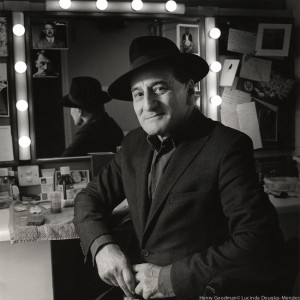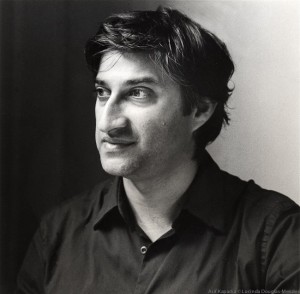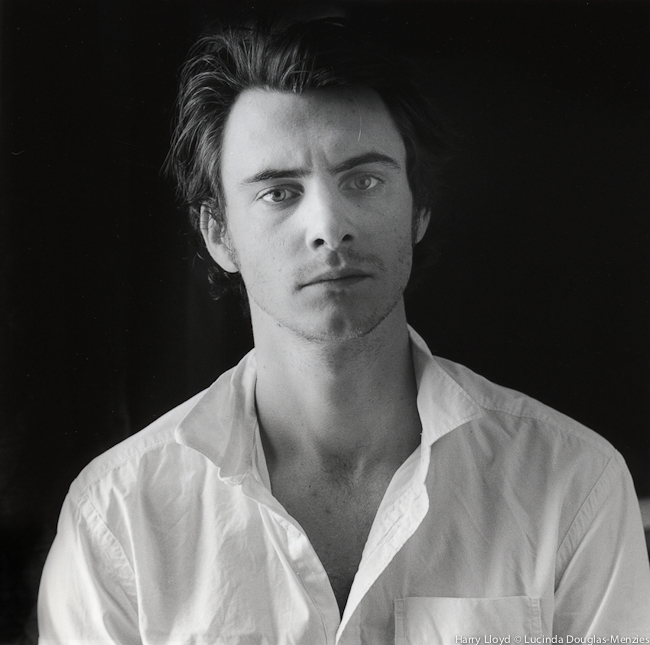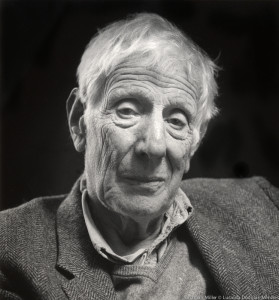Despite Berlin and Paris’ attempts to reclaim the title for Bohemian Capital of Arts, London has still no reason to feel threatened, especially with the East End at its core.
Not necessarily the hipster culture of Brick Lane, which might have lost most substance over to style, but with that side of warehouse vintage feeling which is still authentic if you look close enough, especially around the Old Spitalfields Market, which is where artist and photographer Lucinda Douglas-Menzies has been living for twenty five years now.  The 10×10 Portraits Exhibition, on display at Four Corners (Bethnal Green) until the 6th of December, is the latest in the long list spanning her three decades plus long career. Having previously depicted local personalities in the Spitalfields Portraits permanent display hanging upon the walls of The Golden Heart in Commercial St, this time her focus and involvement in the social circles of East London takes an artistic twist by presenting, in the space of a snapshot, the lives of eleven East Londoners, all involved somehow in the fine arts field.
The 10×10 Portraits Exhibition, on display at Four Corners (Bethnal Green) until the 6th of December, is the latest in the long list spanning her three decades plus long career. Having previously depicted local personalities in the Spitalfields Portraits permanent display hanging upon the walls of The Golden Heart in Commercial St, this time her focus and involvement in the social circles of East London takes an artistic twist by presenting, in the space of a snapshot, the lives of eleven East Londoners, all involved somehow in the fine arts field.
For this series, Douglas-Menzies has put aside digital in favour of the traditional film photography, printing all the rolls herself. And to tiptoe around the life of these eleven artists from East London, the old fashioned process, captured on 120mm film and printed at Four Corner itself, clearly worked at its best with the black and white portraits, where the attention cannot get lost into details, but feels enhanced by them.
 In the environmental portrait featuring multi-award winning actor Henry Goodman, the balance struck between details and composition is giving everything in the blink of an eye: the dressing room lights, the handwriting on walls and the pictures on the mirror’s side won’t leave you pondering longer than a second on the history surrounding this multifaceted artist. Yet, very intelligently, controversial details such as two images of Adolf Hitler will stand out from the background, leaving you hanging and wondering, eager to know even more about the story behind the character, rather than just the picture.
In the environmental portrait featuring multi-award winning actor Henry Goodman, the balance struck between details and composition is giving everything in the blink of an eye: the dressing room lights, the handwriting on walls and the pictures on the mirror’s side won’t leave you pondering longer than a second on the history surrounding this multifaceted artist. Yet, very intelligently, controversial details such as two images of Adolf Hitler will stand out from the background, leaving you hanging and wondering, eager to know even more about the story behind the character, rather than just the picture.
Yet in contrast with this abundance of elements, the simple head shots portraying Asif Kapadia and Harry Lloyd still have this mesmerising ability to let you in some hidden fold of these artists’ personalities and stories through their spacial and referential composition, which is taken to the next level in the shot depicting Jonathan Miller, so closely emulative of the most well known portraits of Samuel Beckett to easily deliver Miller’s history as a theatre and opera director and author via transitive relation.
According to Douglas-Menzies herself, capturing these portrait on film rather than digitally also helped her get back in touch with the photographic process so that “at once the magic returned, the anticipation of the first glimpse of the contact sheet, printing in the quiet of the darkroom, and, a tangible result.” And in fact, just like the soul travels at the pace of a camel, so film allows for these portraits to be conceived as quietly written stories, where it is clear how time was taken during the making process and just the same, the more time will be devoted to every single picture, the deeper the story it will be revealing: every portrait contains whole life stories in the details scattered around (the paradise of every student of semiotics) and the somewhat inquisitive looks dedicated to the camera which will give you the feeling to have indadvertedly stepped in and stole a few seconds from the lives of the artists portrayed.
Actors, Photographers and Musicians, they all feature with their lives on their sleeve in the space of a still, and when the background doesn’t seem to tell you enough to figure out their story, their eyes, lapels and lines of expression will have you wonder about the true artistic scene of East London, which this exhibition will take you to and show you in its real, most authentic form.





